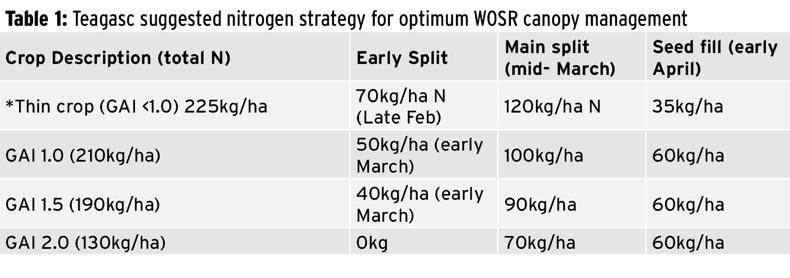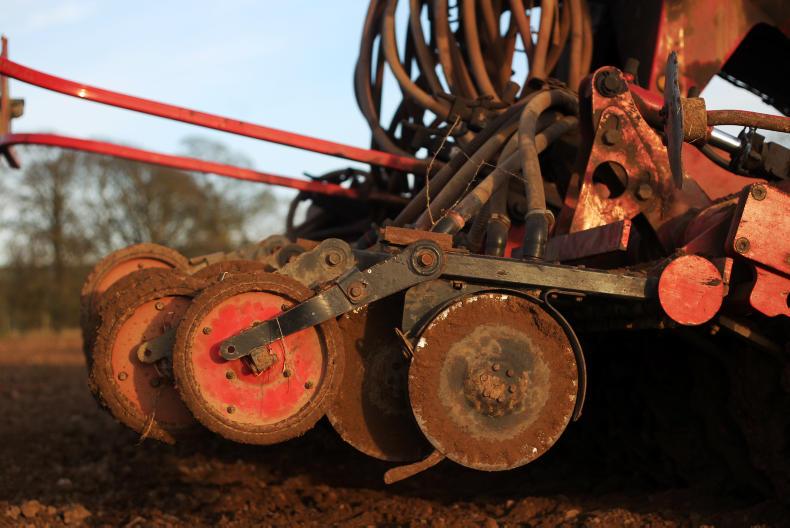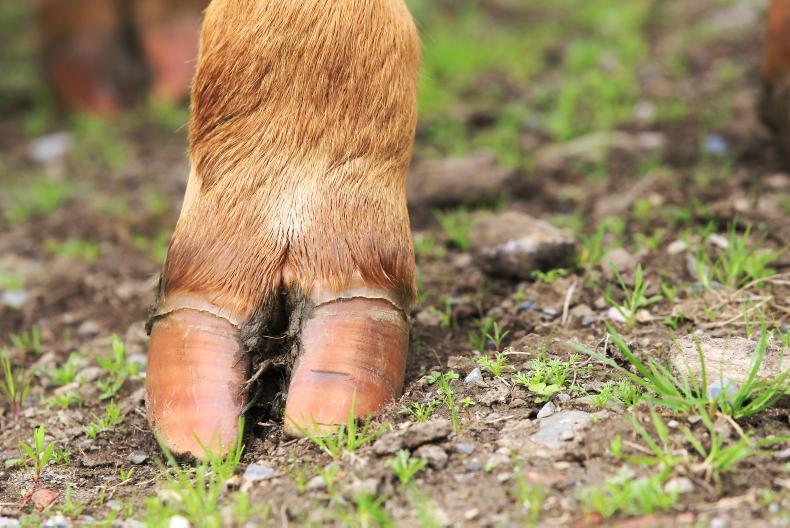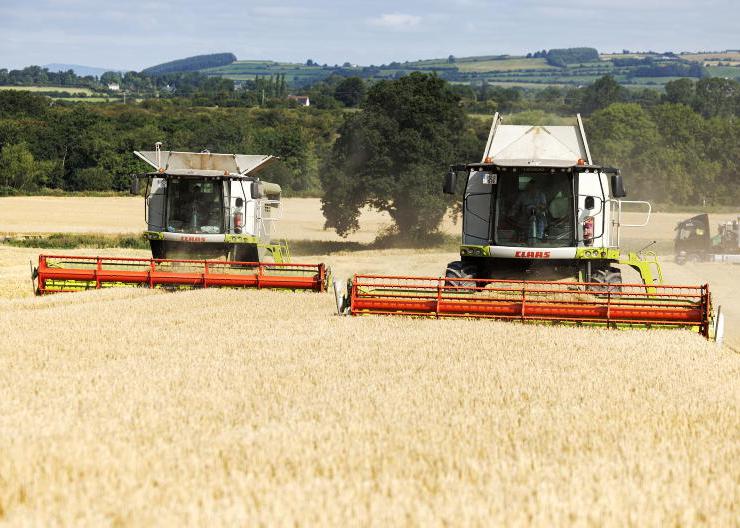Ground conditions remained variable last week which limited field work in some parts of the country. However, areas which escaped the worst of Storm Emma saw large amounts of ground work carried out until the wet weekend kicked in.
Ploughing, spraying and spreading fertiliser are the key jobs on most growers’ lists the week while others are eager to get spring bean planting under way.
The early days of this week appear to be dominated by a low pressure, meaning we’re likely to see some scattered showers, making field work a challenge in some places.
Daytime temperatures will generally range from around 8°C to 10, while nighttime temperatures could dip to as low as freezing in places.
While many will be eager to push on with spring work, patience is advised before ploughing or planting ground which hasn’t sufficiently dried out yet as this will likely have negative implications for the following crop.
Fertiliser
Crop growth stages this year remain variable due to some late planting and poor establishment last autumn. Advanced barley is at gs 23-25, while wheat is at gs 22-23 and oat crops are around gs 22.
Winter barley: Where major nutrients like N, P and K are not available in sufficient quantity to fuel growth, the plant will kill off smaller tillers or older leaves to free up nutrients to feed new growth.
Some winter barley crops around the country have turned very yellow over the past week as they try to grow in the absence of fertiliser, especially nitrogen. These crops need N applied as a matter of urgency to protect yield potential.
However, a large proportion of both six- and two-row crops will have received the first split (33% of total or 40% of total if take-all risk is high) of N by this stage. Some crops are visibly greening up after receiving early nitrogen in the past two weeks. The main split will by applied by gs30/31.
Winter barley should receive its base fertiliser (P and K) with some nitrogen in the coming days.
Winter oilseed rape: The quantity of N which needs to be applied must reflect the current canopy level in the crop. This is assessed by determining the green are index (GAI) using various smartphone apps. Remember, the larger the green leaf area means the more stored N, which means less N to be applied overall.
GAI scores this year have ranged 0.5-2.5. Many of crops with a GAI of 1.0 or lower will have received up to 50-70kg/ha N at this stage. The main split of 100-120kg/ha N will need be applied at the start of stem extension. A final application of 35-60kg/ha N will be needed at mid-flowering. See Table 1 for suggested nitrogen strategies for WOSR crops.

*May require more if allowed under whole farm Nitrates Fertiliser plan
Based on target 5.0 t/ha yielding crop
Winter wheat and oats: These crops will need N now also as growth is hopefully starting. Very forward and lush crops might be allowed to get a little hungry but most crops need to be fed now. So get 30-50 kgN/ha on wheat and oats as soon as possible. Aim to have 15-20 kgS/ha applied to all winter cereals also.
Planting
It is now late for any remaining winter wheat seed to be sown. While the seed will vernalise, maturity can be very late.
The yield potential of spring beans is reduced after mid-March sowing, so aim to drill beans as early as possible. That said, there’s little point in rushing out on poor seedbed conditions to get the seed in the ground as this will effect crop performance significantly.
Plant beans by seed number and target around 35 seeds/m2. To achieve this, you will need to drill 40-45 seeds/m2 which equates to 175-229kg/ha (11-14 st/ac) where seed is between 450g to 650g TGW.
Where possible, get fertiliser into the seedbed at planting. Remember, soil pH is a critical issue for beans (need close to pH 7) so chose your fields carefully.

() = limited data
PGRO 2018 Spring Bean Variety List
Based on target of 30 plants/m2; TGW of 650 g and establishment of 85%.
Spring wheat and oats are next on the list in terms of priority.
Aim to plant spring wheat close to 350 seeds/m2 or about 175 kg/ha (11 st/ac) (assuming 50g TGW). Target oats at about 350-400 seeds/m2 which is about 125-140 kg/ha (8-9 st/ac) for 35g seed.
Ground conditions are still relatively cold yet for spring barley so hold off planting with the exception of very early ground.
Basic Payment Scheme
All packs should have been received at this stage. The 2018 Basic Payment Scheme (BPS) is open for applications. A key change for 2018 is that beans no longer qualify for Ecological Focus Area (EFA). EFAs need to be equivalent to at least 5% of the total arable land declared.
A lot of farmers did not plant their entire planned winter cropping area last autumn due to tricky conditions. This may have implications for the 3 crop rule so keep this in mind when planning this year's spring crops.
Points of note
Teagasc estimate the current area of 2018 winter crops are:
Wheat 55,000ha.Barley 57,000ha.Oats 11,000ha.Rape 7,000ha. Read more
Weather stops field work once again
Monday management: no rush back into the fields as the snow melts
Ground conditions remained variable last week which limited field work in some parts of the country. However, areas which escaped the worst of Storm Emma saw large amounts of ground work carried out until the wet weekend kicked in.
Ploughing, spraying and spreading fertiliser are the key jobs on most growers’ lists the week while others are eager to get spring bean planting under way.
The early days of this week appear to be dominated by a low pressure, meaning we’re likely to see some scattered showers, making field work a challenge in some places.
Daytime temperatures will generally range from around 8°C to 10, while nighttime temperatures could dip to as low as freezing in places.
While many will be eager to push on with spring work, patience is advised before ploughing or planting ground which hasn’t sufficiently dried out yet as this will likely have negative implications for the following crop.
Fertiliser
Crop growth stages this year remain variable due to some late planting and poor establishment last autumn. Advanced barley is at gs 23-25, while wheat is at gs 22-23 and oat crops are around gs 22.
Winter barley: Where major nutrients like N, P and K are not available in sufficient quantity to fuel growth, the plant will kill off smaller tillers or older leaves to free up nutrients to feed new growth.
Some winter barley crops around the country have turned very yellow over the past week as they try to grow in the absence of fertiliser, especially nitrogen. These crops need N applied as a matter of urgency to protect yield potential.
However, a large proportion of both six- and two-row crops will have received the first split (33% of total or 40% of total if take-all risk is high) of N by this stage. Some crops are visibly greening up after receiving early nitrogen in the past two weeks. The main split will by applied by gs30/31.
Winter barley should receive its base fertiliser (P and K) with some nitrogen in the coming days.
Winter oilseed rape: The quantity of N which needs to be applied must reflect the current canopy level in the crop. This is assessed by determining the green are index (GAI) using various smartphone apps. Remember, the larger the green leaf area means the more stored N, which means less N to be applied overall.
GAI scores this year have ranged 0.5-2.5. Many of crops with a GAI of 1.0 or lower will have received up to 50-70kg/ha N at this stage. The main split of 100-120kg/ha N will need be applied at the start of stem extension. A final application of 35-60kg/ha N will be needed at mid-flowering. See Table 1 for suggested nitrogen strategies for WOSR crops.

*May require more if allowed under whole farm Nitrates Fertiliser plan
Based on target 5.0 t/ha yielding crop
Winter wheat and oats: These crops will need N now also as growth is hopefully starting. Very forward and lush crops might be allowed to get a little hungry but most crops need to be fed now. So get 30-50 kgN/ha on wheat and oats as soon as possible. Aim to have 15-20 kgS/ha applied to all winter cereals also.
Planting
It is now late for any remaining winter wheat seed to be sown. While the seed will vernalise, maturity can be very late.
The yield potential of spring beans is reduced after mid-March sowing, so aim to drill beans as early as possible. That said, there’s little point in rushing out on poor seedbed conditions to get the seed in the ground as this will effect crop performance significantly.
Plant beans by seed number and target around 35 seeds/m2. To achieve this, you will need to drill 40-45 seeds/m2 which equates to 175-229kg/ha (11-14 st/ac) where seed is between 450g to 650g TGW.
Where possible, get fertiliser into the seedbed at planting. Remember, soil pH is a critical issue for beans (need close to pH 7) so chose your fields carefully.

() = limited data
PGRO 2018 Spring Bean Variety List
Based on target of 30 plants/m2; TGW of 650 g and establishment of 85%.
Spring wheat and oats are next on the list in terms of priority.
Aim to plant spring wheat close to 350 seeds/m2 or about 175 kg/ha (11 st/ac) (assuming 50g TGW). Target oats at about 350-400 seeds/m2 which is about 125-140 kg/ha (8-9 st/ac) for 35g seed.
Ground conditions are still relatively cold yet for spring barley so hold off planting with the exception of very early ground.
Basic Payment Scheme
All packs should have been received at this stage. The 2018 Basic Payment Scheme (BPS) is open for applications. A key change for 2018 is that beans no longer qualify for Ecological Focus Area (EFA). EFAs need to be equivalent to at least 5% of the total arable land declared.
A lot of farmers did not plant their entire planned winter cropping area last autumn due to tricky conditions. This may have implications for the 3 crop rule so keep this in mind when planning this year's spring crops.
Points of note
Teagasc estimate the current area of 2018 winter crops are:
Wheat 55,000ha.Barley 57,000ha.Oats 11,000ha.Rape 7,000ha. Read more
Weather stops field work once again
Monday management: no rush back into the fields as the snow melts













SHARING OPTIONS